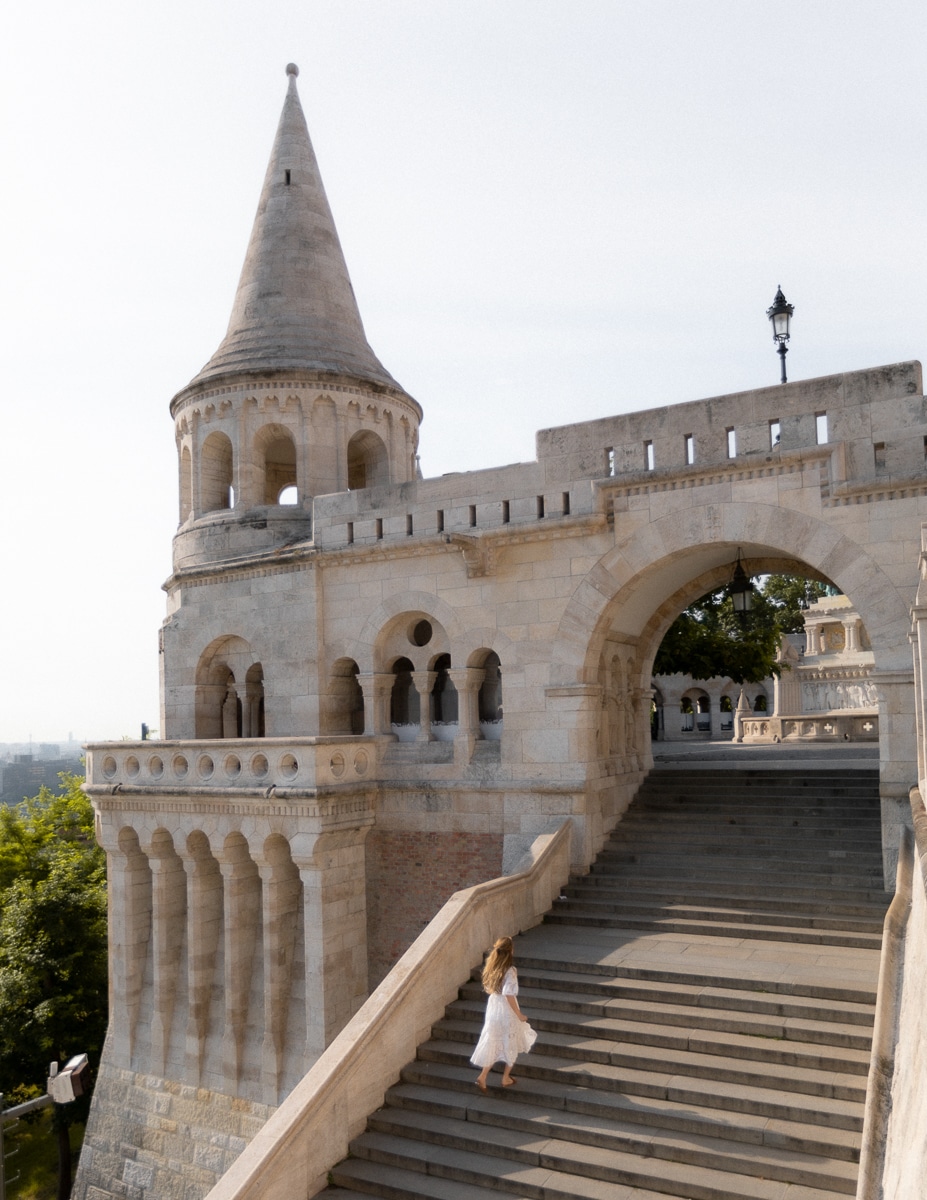Nestled on the banks of the majestic Danube River, you’ll find one of its most iconic landmarks: Budapest Fisherman’s Bastion. With its fairytale-like architecture and breathtaking panoramic views, this hilltop marvel has captured the hearts of locals and tourists alike.
In this in-depth guide, I’ll delve into the captivating story behind Budapest’s Fisherman’s Bastion. We’ll uncover its hidden secrets, and reveal insider tips to make your visit truly memorable.
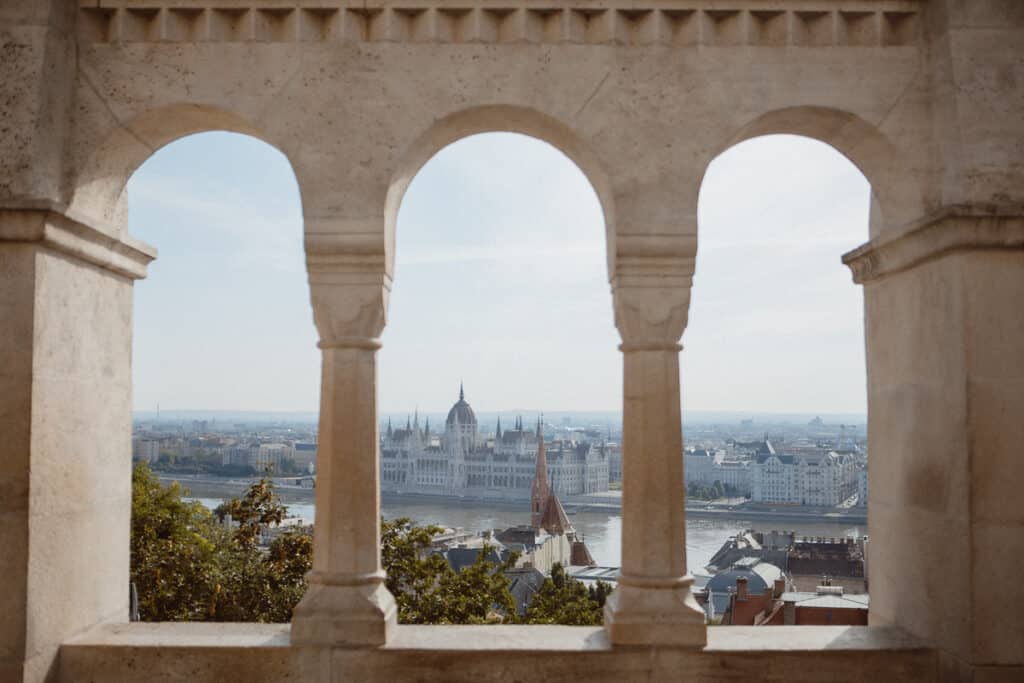

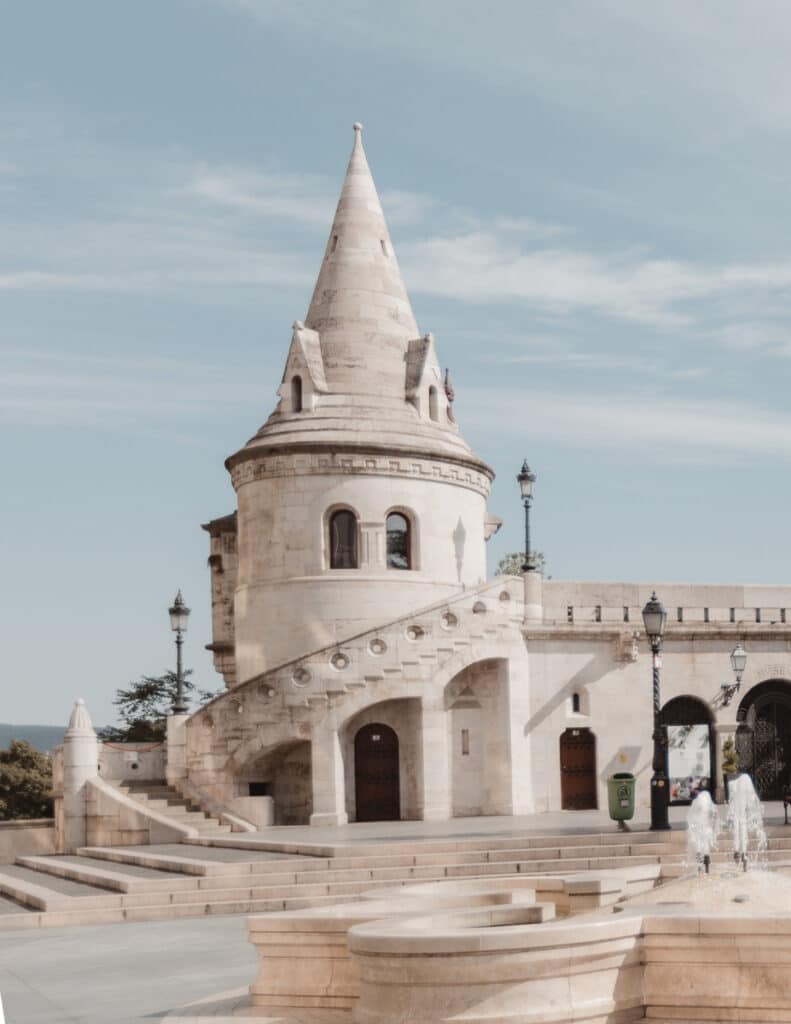
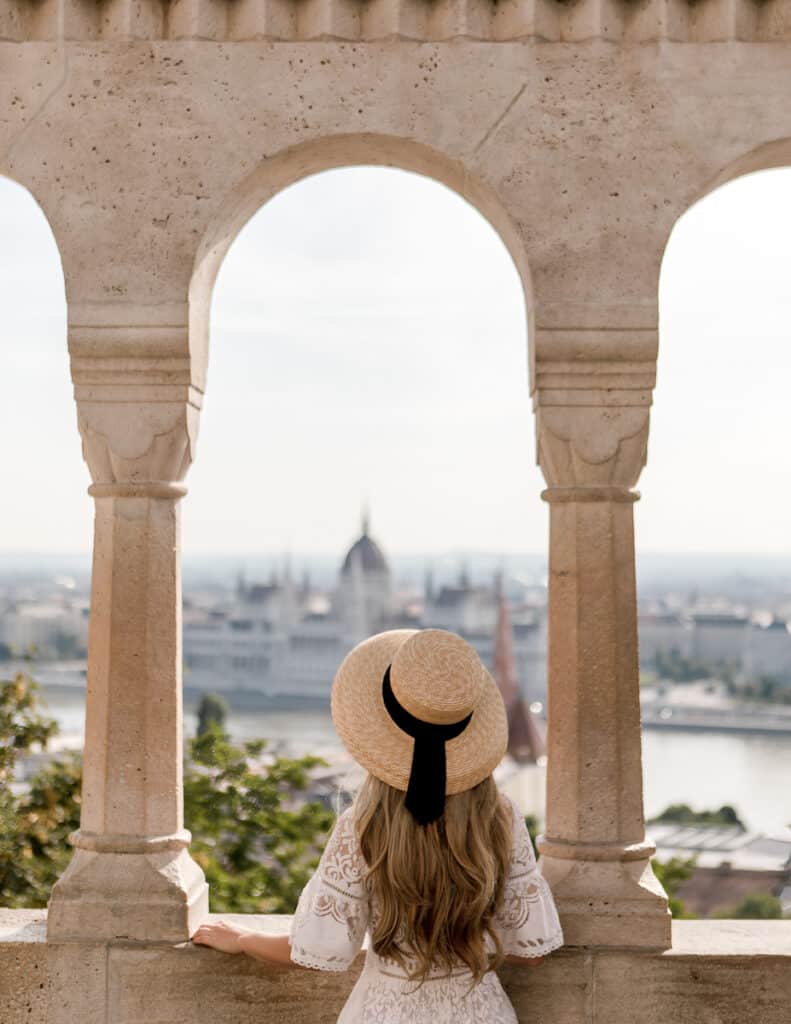
History and design of Fisherman’s Bastion
The Budapest Fisherman’s Bastion, also known as Halászbástya in Hungarian, is a breathtaking sight to behold, with its stunning combination of neo-Gothic and neo-Romanesquarchitectural elements. It resides on the Buda side of Budapest, Hungary.
Built between 1895 and 1902, the bastion’s primary purpose was to serve as a panoramic terrace offering a stunning view of Budapest. Architect Frigyes Schulek designed the masterpiece, together with the nearby Matthias church.
Seven white stone towers
The Fisherman’s Bastion takes its name from the medieval guild of fishermen who defended this stretch of the city walls during the Middle Ages. The structure consists of seven white stone towers representing the seven Magyar chieftains who founded Hungary.
The design draws inspiration from various historical styles. It combines Gothic and Romanesque elements, and its fairy-tale-like appearance has made it one of Budapest’s most iconic landmarks.
Frigyes Schulek’s Design
Frigyes Schulek’s work on the bastion was part of a larger project to restore and enhance the entire Buda Castle District, earning it UNESCO World Heritage sites status in 1987.
The Fisherman’s Bastion constructed on the Castle Hill underwent various renovations over the years to maintain its structural integrity and preserve its historical significance.
Today, the Fisherman’s Bastion remains a popular tourist attraction, attracting visitors from all over the world who come to admire its breathtaking views and explore the rich history and culture of Budapest.
Insider Tips for the Best Experience
How to get to Budapest Fisherman’s Bastion
Walk: If you’re in the Castle District or nearby areas, you can easily walk to the Fisherman’s Bastion. There are pedestrian pathways and stairs leading up to the bastion from various points in the Buda Castle area.
Starting from the Pest side, you can effortlessly stroll by crossing the Danube at either Chain or Elizabeth bridge. Gradually ascend to the castle district from Clark Adam Ter using the various pathways available.
Metro: Budapest has an efficient public transportation system, and you can use it to reach the Fisherman’s Bastion. Take the Metro Line 2 (Red Line) to the “Batthyány tér” station on the Buda side.
From there, you can either walk (around 10-15 minutes) or take the historic “Budavári Sikló” funicular to reach the top of Castle Hill. Once at the top, the Fisherman’s Bastion is just a short walk away.
Hop-On-Hop-Off Bus: Budapest offers hop-on-hop-off bus tours. I find them so convenient to explore the city’s main attractions, including the Fisherman’s Bastion.
BUY | Info & Tickets for Hop-On-Hop Off Budapest Bus
These tour buses have designated stops near the Castle District. You can disembark at the appropriate stop and walk to the Bastion. When you’re ready to move on, simply wait for the next hop-on-hop-off bus to continue your sightseeing journey.
Electric Tuk Tuk: If you prefer something completely different and private, there are many private Tuk Tuk tours that will take you around the best insider places in Budapest, including the Buda Castle.
BUY | Info & Tickets for Private Sightseeing Tuk Tuk Tour
Fisherman’s Bastion Car & Parking Options
There are some on-street parking spaces available in the Castle District. They might be limited during peak season. Parking on the streets is typically paid for and regulated by parking meters or ticket machines. Be sure to check the parking signs and pay for your parking time accordingly.
There are a few parking garages located in the Castle District or nearby areas. These garages offer a more secure and convenient parking option for visitors. One such parking garage is the Szilágyi Dezső Square Parking Garage, located a short walk from the Fisherman’s Bastion.
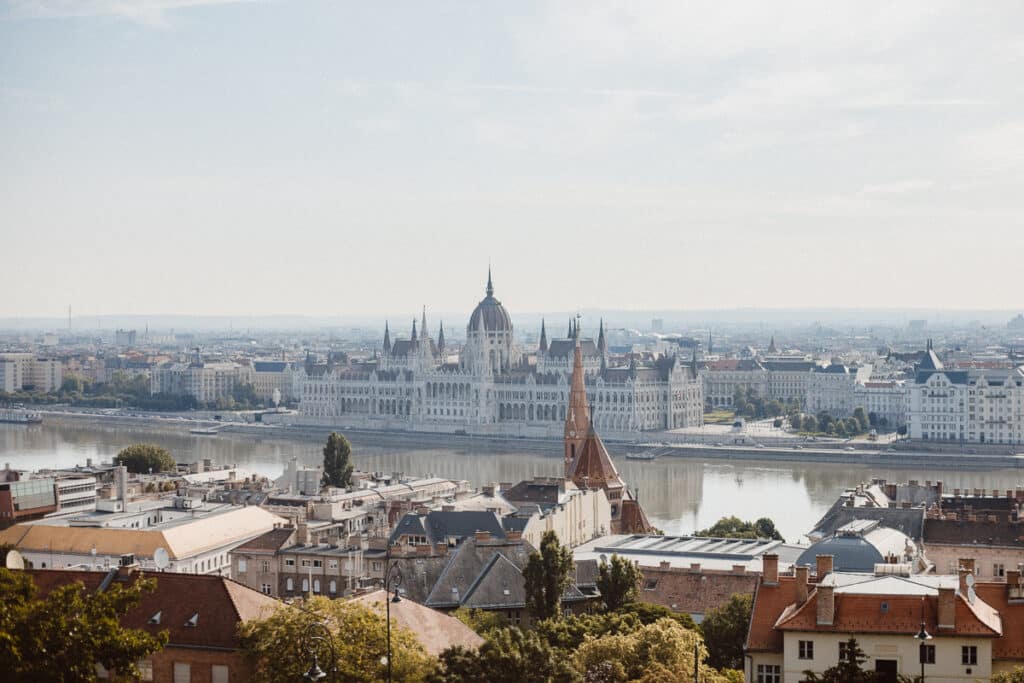
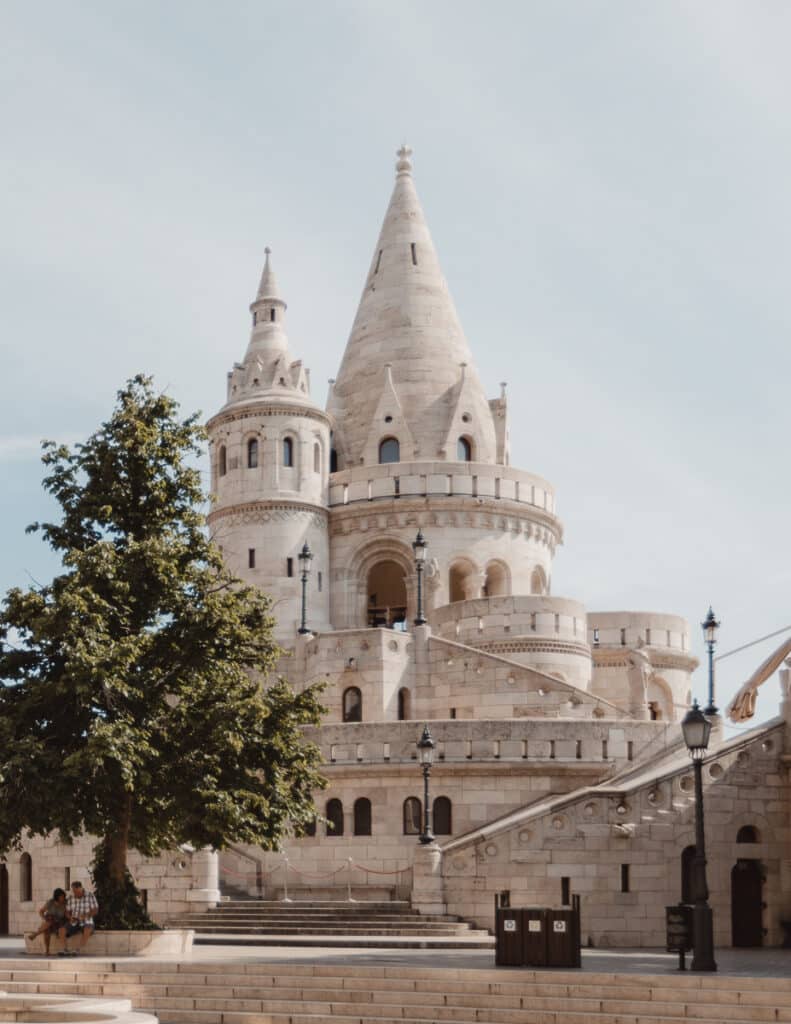
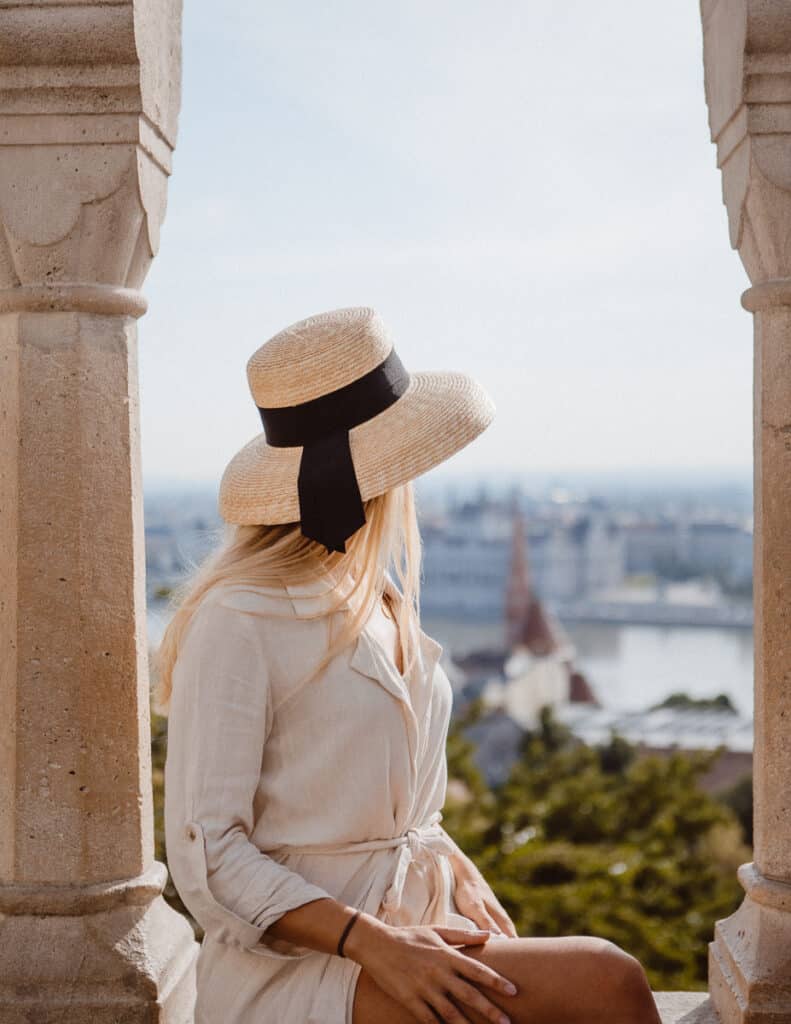
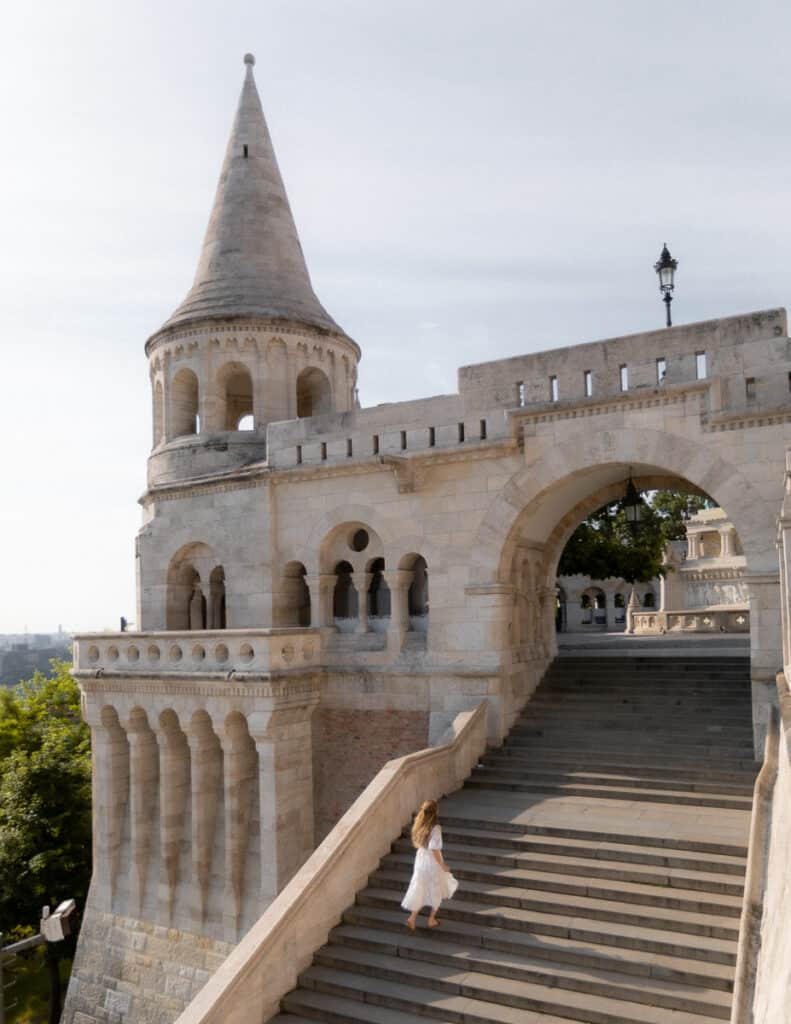
Budapest Fisherman’s Bastion Entrance fees
The Budapest Fisherman’s Bastion has two main areas: the lower terrace and the upper terrace.
The lower terrace is open to the public free of charge. It provides a beautiful view of the surrounding area, including the Danube River and the Hungarian Parliament Building.
Upper terrace
However, there is an entrance fee to access the upper terrace and its towers. It offers more extensive panoramic views and a closer look at the bastion’s architecture.
The entrance fee HUF 1,000 pp (€3.4) applies to a specific section of the Fisherman’s Bastion. It may vary depending on the time of year.
You can buy a tickets at the ticket booth or the nearby ticket vending machine across from Matthias Church.
BUY | Info & Pricing Fisherman’s Bastion Upper Deck tickets here
Fisherman’s Bastion Opening hours
The Fisherman’s Bastion in Budapest generally opens 24 hours a day, 7 days a week. If you like to visit during ticket hours:
- From April 1 to October 31: The Fisherman’s Bastion is open from 9:00 AM to 11:00 PM.
- From November 1 to March 31: The Fisherman’s Bastion is open from 9:00 AM to 8:00 PM.
If you want the Bastion all to yourself, I suggest arriving at 5 am. Later during the day it get get jampacked with tourists and photographers, even during sunset.
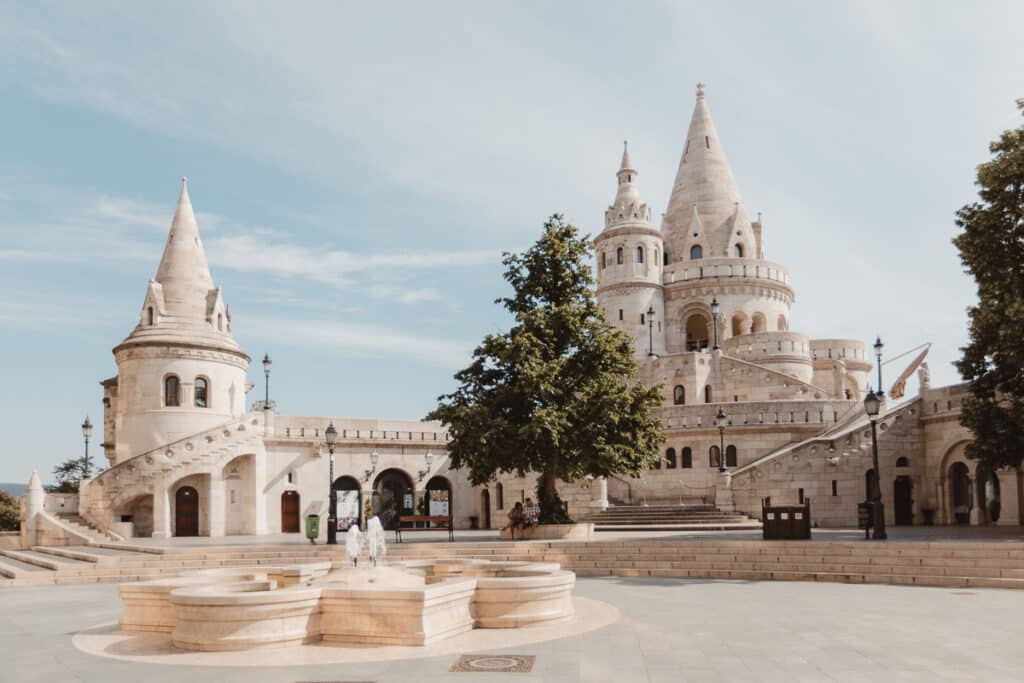
Best photography spots at Fisherman’s Bastion
- Upper Terrace and Towers: The upper terrace with its seven fairytale-like towers provides fantastic panoramic views of Budapest, including the Parliament Building and the Danube River. The intricate neo-Gothic and neo-Romanesque architecture of the towers makes for beautiful and unique photo compositions.
- Balconies and Archways: The Fisherman’s Bastion has several balconies and archways that frame the cityscape beautifully. These archways provide a great foreground element for your photos, creating depth and interest in your compositions.
- Matthias Church: The Matthias Church, located adjacent to the Fisherman’s Bastion, is an iconic landmark with its colorful roof tiles and beautiful architecture. You can capture stunning photos of the church from various angles while standing on the Fisherman’s Bastion.
BUY | Budapest Castle Hill Walk with Matthias Church Entry
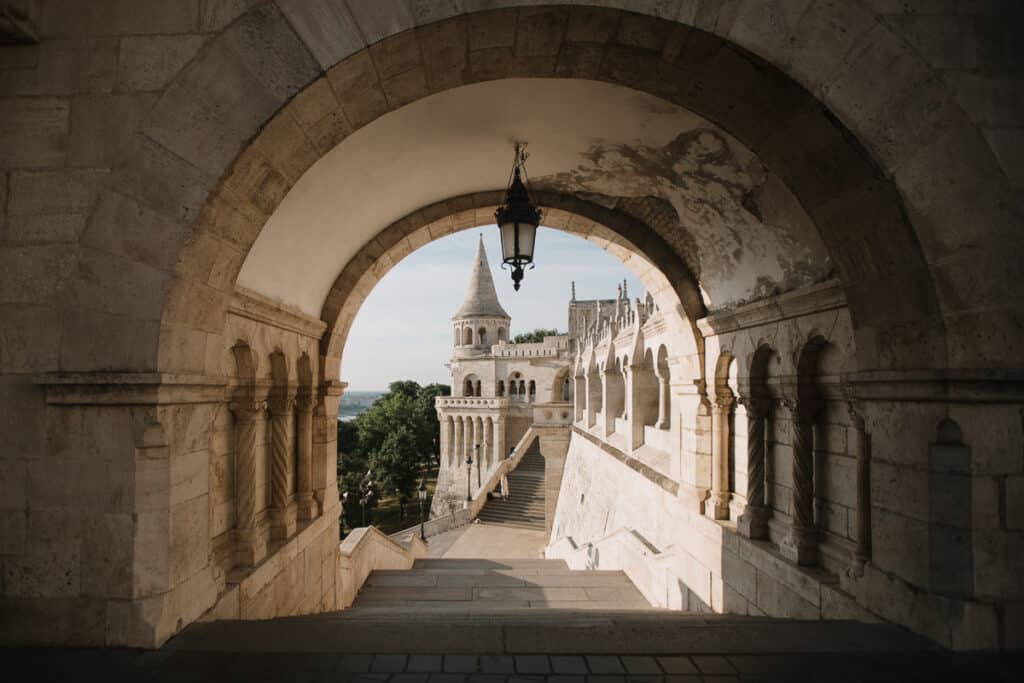
Tourist attractions nearby Fisherman’s Bastion
Here are three top tourist attractions that are not too far from the Fisherman’s Bastion in Budapest:
- Matthias Church (Mátyás-templom): Right next to the Fisherman’s Bastion is the stunning Matthias Church. This historic church is one of the most important religious sites in Hungary, with a history dating back to the 13th century. It features a colorful, decorative roof, beautiful stained glass windows, and intricate architecture. The interior is equally impressive, with captivating frescoes and religious artifacts.
- Hungarian Parliament Building (Országház): Located on the Pest side of the Danube River, opposite the Buda Castle District, the Hungarian Parliament Building is an iconic landmark and a must-visit attraction in Budapest. This impressive Gothic Revival-style building houses the National Assembly of Hungary and features stunning architecture, including intricate details, statues, and a central dome. The building looks particularly magnificent when illuminated at night.
- Shoes on the Danube Bank: A short walk from the Hungarian Parliament Building, you’ll find the Shoes on the Danube Bank memorial. It commemorates the tragic events of World War II when Jewish people were ordered to take off their shoes and shot into the Danube River by Arrow Cross militiamen. The memorial consists of bronze shoes lined along the riverbank, serving as a poignant reminder of the city’s history.
- St. Stephen’s Basilica (Szent István-bazilika): Located in the heart of Pest, St. Stephen’s Basilica is the largest church in Hungary and a remarkable example of neoclassical architecture. Visitors can climb to the top of the dome for stunning views of Budapest. Inside, you’ll find beautiful mosaics, religious artwork, and the holy relic of St. Stephen’s right hand, which is on display during certain times.
Planning a trip to Budapest?
Make sure you check out my other tips and guides:
A Guide to Szechenyi Baths in Budapest, Hungary
St. Stephen’s Basilica: a must-visit in Budapest
The Four Seasons Budapest Gresham Palace Hotel Review
Visiting World’s Most Beautiful Cafe, New York Café Budapest
